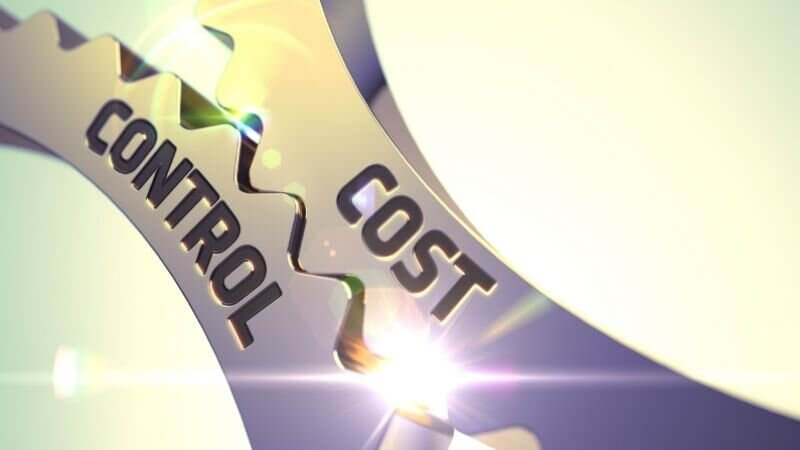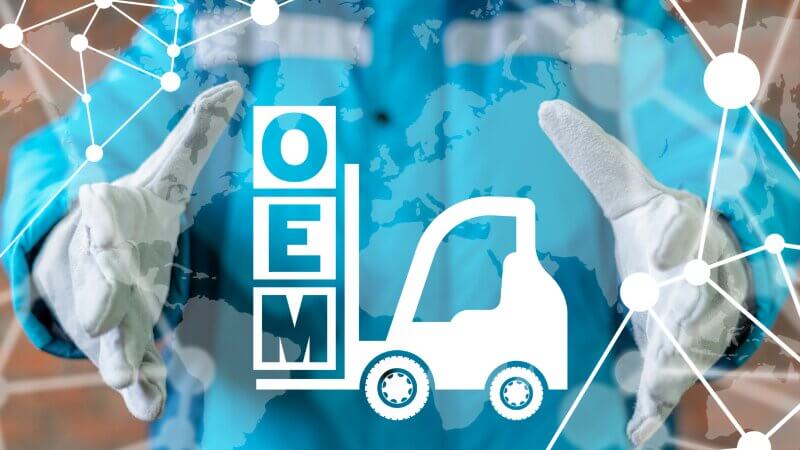How Manufacturers Can Save MRO Costs in UAE by 10%?

How Manufacturers Can Save MRO Costs in UAE by 10%?
If your enterprise is searching for solutions to save MRO costs in UAE, here is the catch. MRO costs usually account for somewhere between 5-10% of total costs and may not make up a significant chunk of the cost of goods sold (COGS). However, UAE has a highly competitive manufacturing landscape and even 1-2% of cost efficiencies can make or break your cost advantage.
To assist in a better way, we have outlined some of the steps to help manufacturers in the UAE avoid recurring expenses on MRO. If you are a manufacturer, you can take care of the following points to save MRO costs in UAE.
Manufacturers Must Minimize Return of Items
Delivering a product incurs a cost. Manufacturers price their products inclusive of that cost. However, when anything goes sideways, such as the product not being up to the quality standards as expected or has some defect, the buyer may return it. The return of items will add to the logistics expenses and impact the overall revenue.
Although the irregularities in the product may exist to some extent, manufacturers should try minimizing the double load on logistics by delivering the correct item in the first place. Here are a few points you can keep in check to reduce the rate of return:
- Quality Control Of Goods
- Correct Sizing Information
- Proper Packaging
- Timely Reviews and Feedback
- Round-the-clock Support
Take control of and implement those points to reduce the return of goods sold.
Manufacturers Should Opt for Digital Supply Chain Solutions
What humans can do, automation can do better. It holds in the case of supply chain management processes. It requires diligent work to manage the whole production line, i.e., from procurement to the final product delivery. If we focus just on the initial procurement part, there are different raw materials from various suppliers. On delving deeper, you have separate invoices for every procurement. On top of it, the communication channel is email, which requires regular follow-ups in case of any delays.
If you sum up all this, you will find it takes rigorous manual effort and consumes more time. As a result, your overall production time gets increased. However, if you enable procurement automation, you won’t have to stress repetitive tasks. Below are some notable advantages of relying on P2P automation:
- Easy-to-manage orders and supplies information
- A 50% reduction in TAT
- Easy monitoring of data
- Less hassle
Also, if multiple transactions happen at quick intervals, you can create an SOP and align your process to it. The SOP will help you scale your business. All in all, a refined approach coupled with digital supply chain solutions can create a difference in your final expenses. Thus, helping you boost your profits.
Manufacturers Must Find a Way to Deal with Ad-Hoc Procurement
As a manufacturer, you work on a contractual basis with your partners. You produce a definite amount of goods using the raw materials as decided in the contract. However, there are times when there is an unscheduled requirement of any product. Being a non-recurrent and non-strategic demand, it increases manufacturing enterprises’ expenses.
To solve this issue, manufacturers can take some steps such as:
- Enter into annual rate contracts
- Request for bulk orders
- Regulate your logistics
- Enable Procure-to-Pay solution
- Streamline processes
The main route of escape for manufacturers here is switching to annual rate contracts. In that way, they will be able to fulfill orders in a much better way. It will help them to avoid any unplanned expenses because of no ad-hoc buying.
Manufacturers Should Take Advantage of Data Analytics
The projection of demand and supplies can be difficult to gauge when you rely on static data. For example, an item you are producing may not garner similar interest in the market at a particular time due to various reasons. Since every step in the production line is interconnected, it is critical to have a correct projection right from scratch.
To do so, manufacturing enterprises can use technology and gain valuable insights into the procurement process. New-age technologies such as Artificial Intelligence (AI) and Machine Learning (ML) can help manufacturers create a mathematical model based on inputs from the data collected and facilitate better decision-making.
Some important avenues that AI and ML will open up for manufacturers are:
- Ability to look beyond the static data
- Evaluate the correct demand
- Improved risk management based on collected data
- Flexibility and transparency
P2P software solutions enhanced by AI and ML technologies can unlock opportunities that remain hidden from us. Thus, adding to the MRO costs, which you can save.
Wrapping Up
Summing up what we have learned here is that saving MRO costs for manufacturers in the UAE is a choice. With a careful, proactive approach and use of technology, you can minimize additional expenses and save up to 10% MRO costs, thus maximizing profits in the long run.
How Can OEMs Benefit from e-Procurement in UAE

How Can OEMs Benefit from e-Procurement in UAE
e-procurement in UAE is not an isolated scenario; today’s world is running on digital wheels. Every industry is employing its digital skills to reap improved performance. The opportunities are immense.
However, despite continuous evolution, OEMs are slow to adapt to digital tools and techniques. It is because of the over-reliance on traditional skills and methods. As a result, the cycle from indirect procurement to the final delivery to customers, consumes 80% of the time of sourcing teams.
Cutting corners has become the pandemic-enforced trend to maximize profits in a business. At this time, digitalization in the supply chain can be a worthy step. It offers multiple advantages and underlines significant growth in the figures. To best understand its influence, let us unearth some key benefits.
Solving the Challenges in Supply Chain
The world is still recovering from the impacts of the COVID-19 pandemic. If we talk about the manufacturing sector, the virus has piled up on the challenges it was already facing. The COVID-19 induced lockdown dealt a heavy blow to the UAE economy, with businesses, and their supply chain all bearing the brunt. The International Monetary Fund (IMF) projected a 6.6% contraction in the GDP last year. It was mainly due to the impact of COVID-19 on key performance sectors and the fall in oil prices.
Sourcing the raw materials took the backseat, which resulted in a dip in manufactured products. Subsequently, the supplies to the end-users also got hampered. The dampening of business activities posed several challenges for the businesses to overcome.
To resolve the challenges, making a move in the right direction is imminent. With digitalization, businesses can adhere to the COVID-19 guidelines while conducting their business activities. Digital supply chain solutions are the most basic and foremost available methods to revive the lull operational activity.
Aligning with the Economic Growth
The UAE government announced a financial stimulus package to the tune of AED 100 Billion, among other measures to dilute the impact of the lockdown. However, the revival is not as instantaneous as the losses.
The IMF painted a brighter picture of the UAE’s economic recovery with a 3.1% growth, better than its 1.3% projection in October 2020. The positive outlook is a result of the combined efforts of the country and its citizens. OEMs can expedite their transition from traditional competencies to modern ones like adoption of a P2P software solution and supply chain digitization initiatives. Procurement automation, also known as P2P automation is integral to OEMs in UAE to stay on the course to recovery.
Taking a Step Towards Procurement 4.0
Since we live in Industry 4.0 era, we can find the production chain going ostensibly digital in its entirety. The ability to get a bird’s-eye view of your complete production link hands a better chance to minimize losses and maximize productivity. Businesses can acquire the necessary information on their logistics, such as the position of trucks, containers, and even pallets. All this at the click of a button.
To promote digital supply chain transformation, the UAE government is already taking steps under its Smart Government initiative to become a paperless government by 2021. The government is inviting the bid for tenders via electronic mode to facilitate a seamless procure-to-pay solution. Through this, suppliers can monitor their purchase orders and also submit digital invoices. This e-Procurement solution aims at digitizing and automating the complete process.
As digitalization is inevitable, OEMs must deploy it in their operational activities to make progress. e-procurement will enable easy management of complex supply chain processes. It will also allow businesses to use their people’s talent in other critical areas that require human involvement.
Experiencing Improved Decision-Making
Data is the key to gaining visibility into the supply chain. It is enabling digital supply chain solutions to divulge critical information to improve your decision-making capabilities and optimize business growth. With procurement automation in place, businesses can effectively monitor key performance indicators. On its basis, they can identify the improvement areas.
Cost-optimization is a must during this period of economic rebound. P2P automation offers this across the whole supply chain management processes. Digitalization’s other advantages are transparency, more visibility, a safe and neat collection of data, and cost-efficiency. All in all, businesses can streamline their processes and manage them effectively.
The Now and the Next for CPOs of OEMs in UAE
Digital supply chain transformation in the UAE is imminent, as the economy branches out to new-age non-oil verticals. However, it should not be in parts. For OEMs in the UAE to benefit from the adoption of e-procurement, CPOs have to take a unified view of the different but interlinked silos of the supply chain. Therefore, CPOs in UAE need to replace multiple solutions for different procurement functions with an integrated procurement automation system and consolidate supplier base management functions into one centralized control tower.

